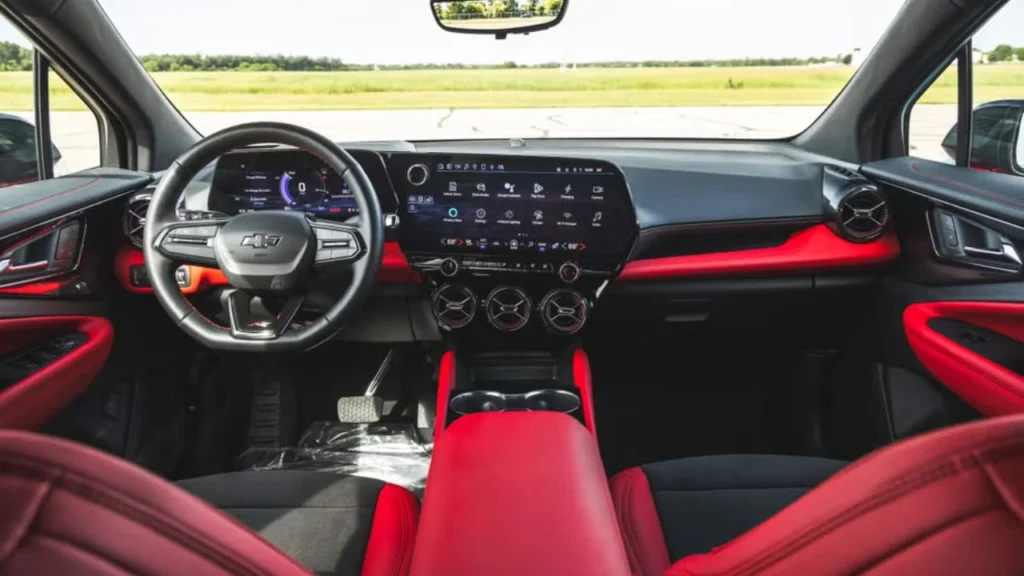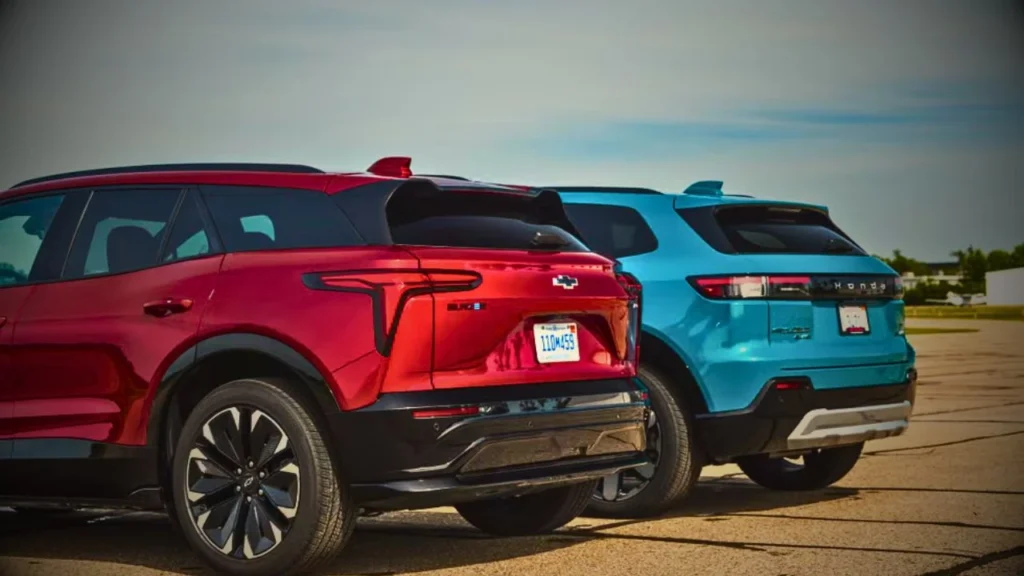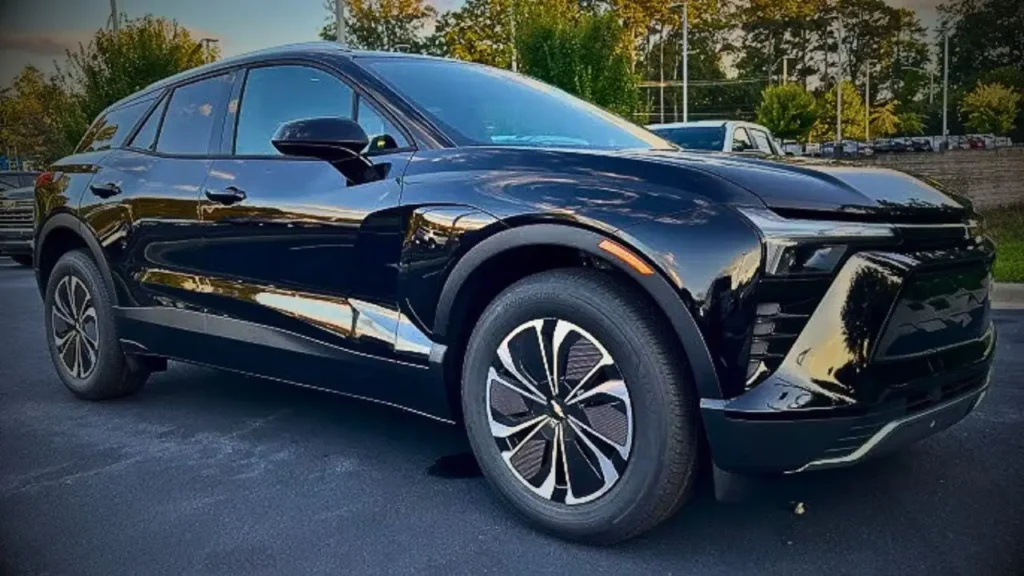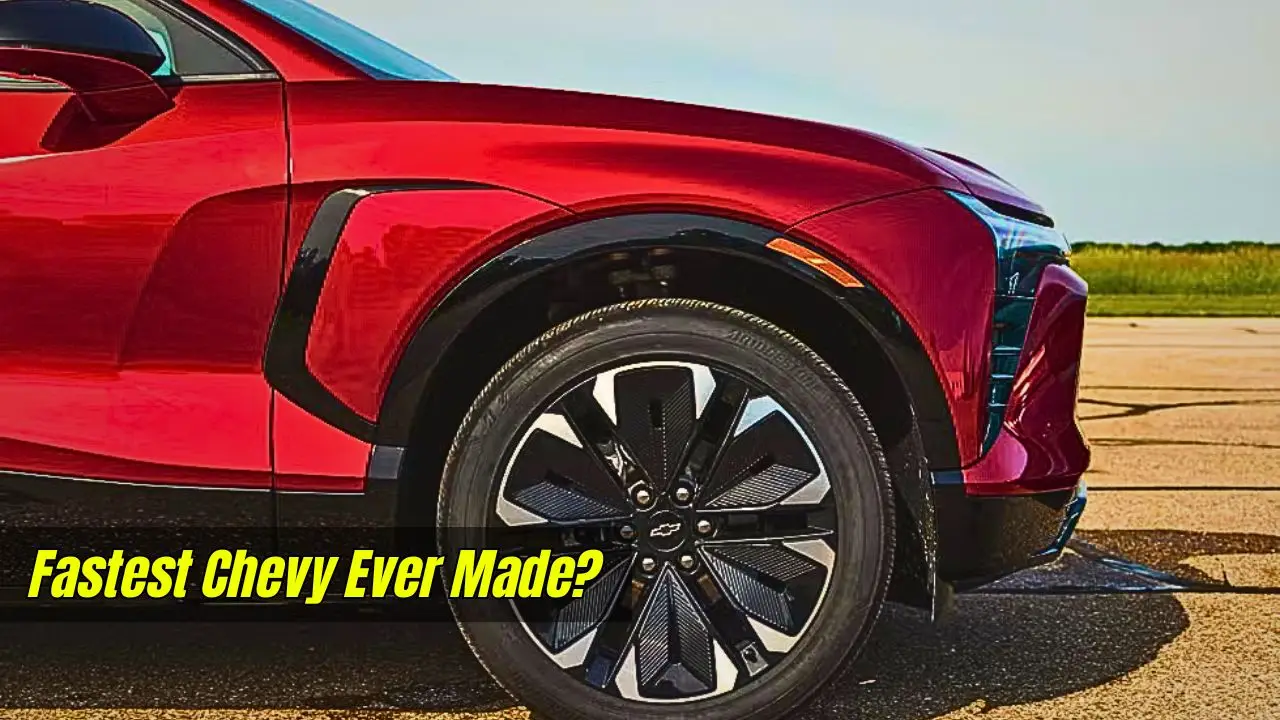“Chevy’s 615HP Blazer EV SS redefines electric speed: 303-mile range, 3.4s 0-60, and Super Cruise. Does it beat Tesla?”
Think about this an SUV that outruns a Porsche 911, powers your home during blackouts, and costs less than a Tesla Model X. Meet the 2025 Chevy Blazer EV SS — a 615HP electric beast that’s rewriting the rules of performance. But is it perfect? Let’s dig in.
The Good: Why This EV Is a Game-Changer

Ludicrous Speed, Practical Range
The Blazer EV SS isn’t just fast—it’s the quickest SS-badged vehicle in Chevy’s 64-year history, hitting 0-60 mph in 3.4 seconds thanks to its dual-motor “Wide Open Watts” (WOW) mode. For comparison, that’s quicker than the Ford Mustang Mach-E GT (3.8s) and neck-and-neck with the $68K Hyundai Ioniq 5 N. Yet, unlike its rivals, it delivers a 303-mile range — 82 miles more than the Hyundai and just shy of Tesla’s Model Y Long Range.
Track-Ready Upgrades (Without the Drama)
Chevy didn’t just bolt on power. The SS gets 60% stiffer anti-roll bars, Brembo 6-piston brakes, and 22-inch summer tires (via a $395 Performance Pack) to handle its 5,730-pound bulk. On winding roads, it’s surprisingly agile, though journalists noted understeer on tight tracks.
Tech That Feels Like 2030
- Super Cruise: GM’s hands-free system now works on 400,000+ miles of roads.
- Bidirectional Charging: Power your home during outages (with GM Energy hardware).
- Google Built-In: Seamless navigation and streaming, though no Apple CarPlay/Android Auto.
The Bad: Where Chevy Cut Corners

“Why Are the Seats So Flat?!”
The Blazer SS shares its unsupportive seats with cheaper trims. Test drivers struggled to stay planted during hard cornering, calling it a “missed opportunity” for a performance SUV. The Hyundai Ioniq 5 N’s race-inspired buckets? Far better.
Charging: Good, Not Great
While the SS charges at 190 kW (adding 78 miles in 10 minutes), it’s slower than Hyundai’s 238 kW and Tesla’s 250 kW speeds. For road trips, Tesla’s Supercharger network (now accessible via adapter) saves the day.
Weight Matters
At 5,730 lbs, the Blazer SS weighs more than a Mercedes G-Wagen. You feel it in sharp turns, despite Chevy’s suspension tweaks.
2025 Chevy Blazer EV SS Vs. the Competition: Who Wins?
| Feature | Blazer EV SS | Ford Mach-E GT | Hyundai Ioniq 5 N |
|---|---|---|---|
| Horsepower | 615 HP | 480 HP | 641 HP |
| 0-60 MPH | 3.4s | 3.8s | 3.25s |
| Range | 303 miles | 280 miles | 221 miles |
| Price (Before Credits) | $62,095 | $59,995 | $67,675 |
| Tax Credit Eligible? | Yes ($7,500) | No | No |
Verdict: The Blazer SS offers the best balance of power, range, and value, especially with the tax credit. But for pure thrills, the Hyundai Ioniq 5 N still rules.
Evolution: How It Fixes the 2024 Blazer’s Mistakes
The original 2023 Blazer EV was plagued by software glitches that stranded drivers and triggered a nationwide stop-sale. Chevy fixed the bugs by March 2024 and added 18% more power to the SS (up from 557 HP) while dropping its price by $3,000. The 2025 model also debuts video streaming and smarter route planning for charging stops.
Should You Buy It?

For Families: With a roomy interior, up to 60 cubic feet of cargo space, and hands-free Super Cruise, it’s a road-trip dream on wheels.
For Speed Lovers: That WOW mode is seriously thrilling — but if you’re chasing track-day glory, you might want to hold out for the rumored Corvette EV.
For Deal Seekers: Priced at $54,595 after tax credits, it undercuts the Ioniq 5 N by a solid $13K. That’s a lot of savings for a lot of power.
Final Word: The 2025 Blazer EV SS isn’t just a fast SUV — it’s a statement that Detroit can out-Tesla Tesla. But with rivals like Hyundai pushing harder, Chevy’s next move needs sharper seats and lighter tech. Ready to join the electric Super Sport revolution?
Tags: Electric SUV, Fastest SS Model, 615 Horsepower, Super Cruise, Tesla Competitor, EV Tax Credit, Wide Open Watts Mode

